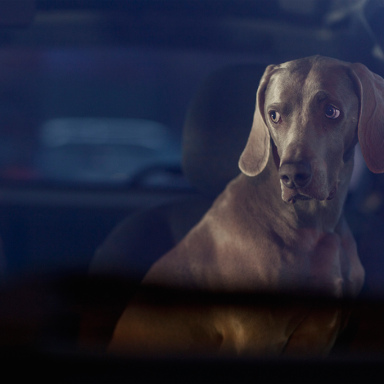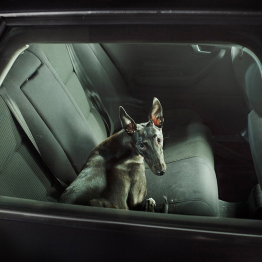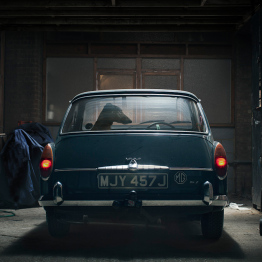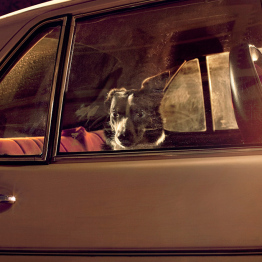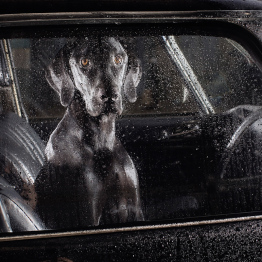In this series, Martin Usborne looks at the fractured relationship between humans and animals. In particular, the way in which we control and silence the animals in our lives. There is a strong psychological component to his work and the animal subjects within it can be taken to represent parts of our psyche - the hidden, rawer aspects of ourselves that we don’t like to express. Despite the emotional intensity, much of Martin’s work has a subtle humour.
Martin describes his inspiration behind the series in his own words:
I was once left in a car at a young age. I don’t know when or where or for how long, possibly at the age of four, perhaps outside a supermarket, probably for fifteen minutes only. The details don’t matter. The point is that I wondered if anyone would come back. In a child’s mind it is possible to be alone forever.
Around the same age I began to feel a deep affinity with animals - in particular their plight at the hands of humans. I saw a TV documentary that included footage of a dog being put in a plastic bag and being kicked. What appalled me most was that the dog could not speak back. Its muteness terrified me.
I should say that I was a well-loved child and never abandoned and yet it is clear that both these experiences arose from the same place deep inside me: a fear of being alone and unheard.
The images in this series explore that feeling, both in relation to myself and to animals in general. The dog in the car is a metaphor, not just for the way that animals (both domestic and wild) are so often silenced and controlled by humans but for the way that we so often silence and control the darker parts of ourselves: the fear and loneliness that we would rather keep locked away.
Hi Martin, please can you tell us what has inspired you to create this series.
As it says on the site - a memory of being left in the car as a child combined with a fascination of animals. Just like I felt mute in the car so many animals also seemed withotu a voice.
On all photographs the dogs are portrayed with a similar expression of sadness and loneliness. How challenging was it to photograph the dogs?
I wouldn’t say they have the same expression; some are asleep, some longing, some expectant. It was always a lottery working with the dogs as they move so much but on the whole it was a lot easier than photographing humans. Dogs give a very honest account of themselves.
Can you give us some information about a typical day shooting this series?
It would take weeks to find the car, location, dog combination that would work. The shots were normally done at dusk and would take a couple of hours set up, a couple of hours shooting and then a long time in the studio reviewing images and working on colours.
What message do you wish to convey through this series?
There is life in the darkest places inside us. We should look into the close spaces inside us and see the face in there. But then people might just read the images as ‘dogs in cars’, which is fine too.
What is the most important tip you learn from another photographer? And has this reflect into your work?
What I’ve learn from other photographers comes from looking at their work rather than speaking to them. I learn a lot from Todd Hido and Gregory Crewdson; the way they control light, mood and atmosphere.
Thank you so much for your time today and here’s our last question. If we were to send you to a desert island and allowing you to take with you only one picture taken by another photographer. What would this picture be?
A picture of my family that has not yet been taken.
To view the entire series and other work from Martin, please visit: www.martinusborne.com
Exhibition
Venue: The Little Black Gallery, 13A Park Walk, London SW10 0AJ
Open: 19th March - 27th April 2013
For more information on the exhibition, please visit: www.thelittleblackgallery.com
Book
Title: The Silence of Dogs in Cars
Publisher: Kehrer Verlag
Texts by Susan McHugh/Martin Usborne
96 pages, 34 x 27 cm
Price: €40, hardcover

